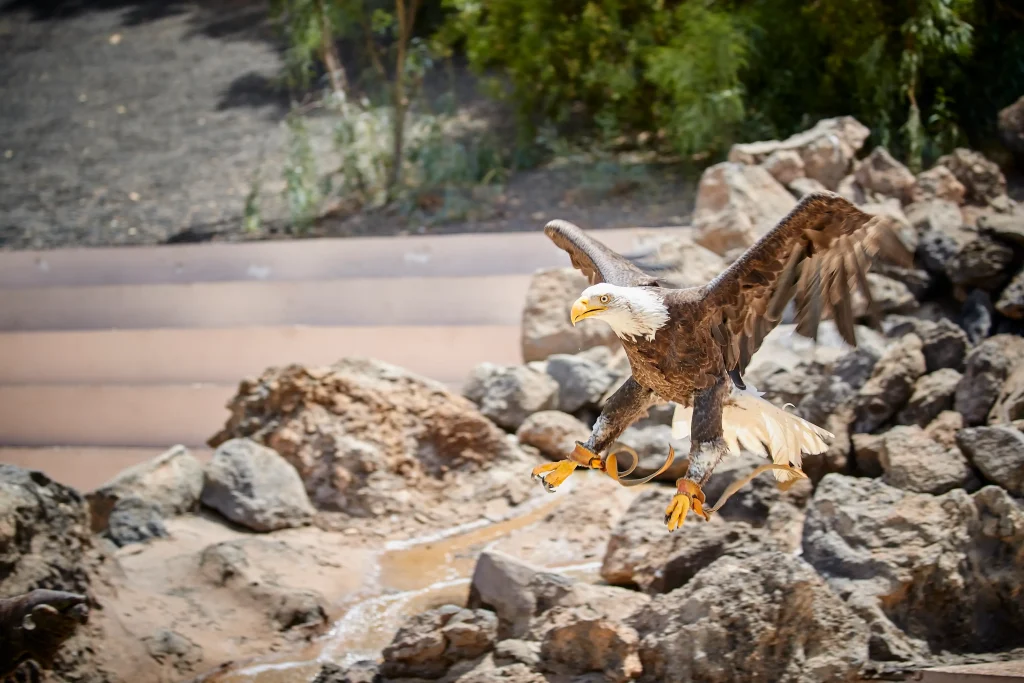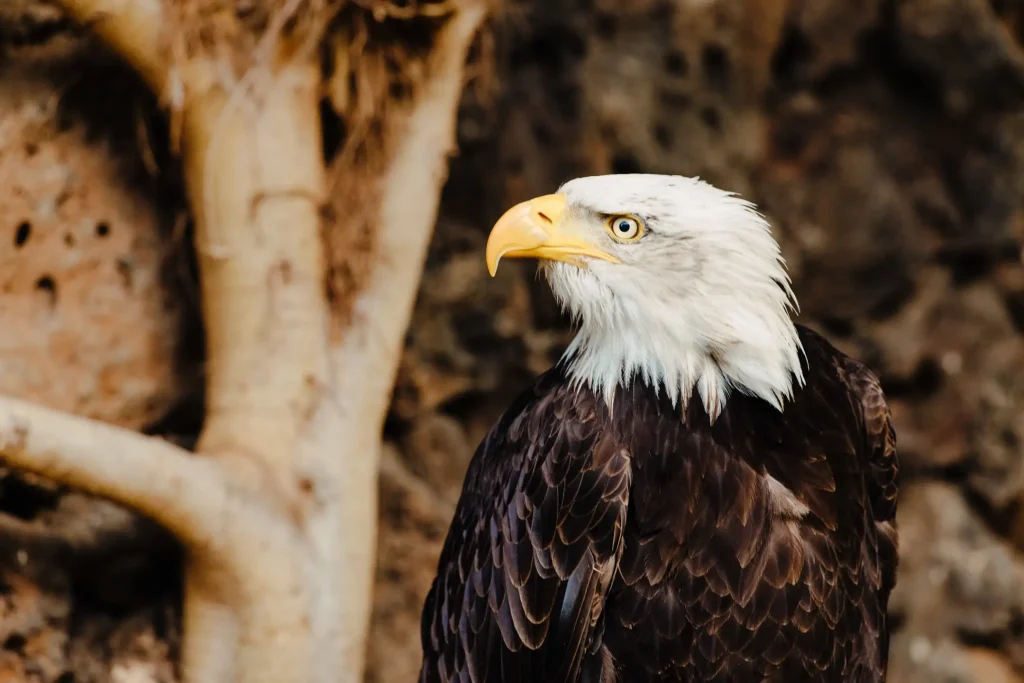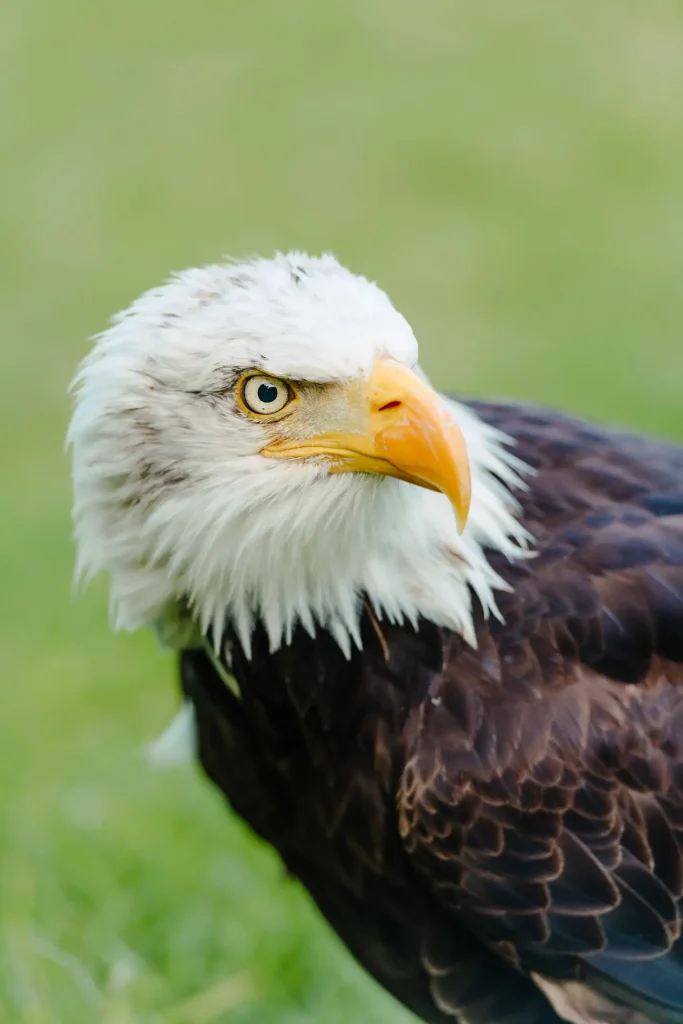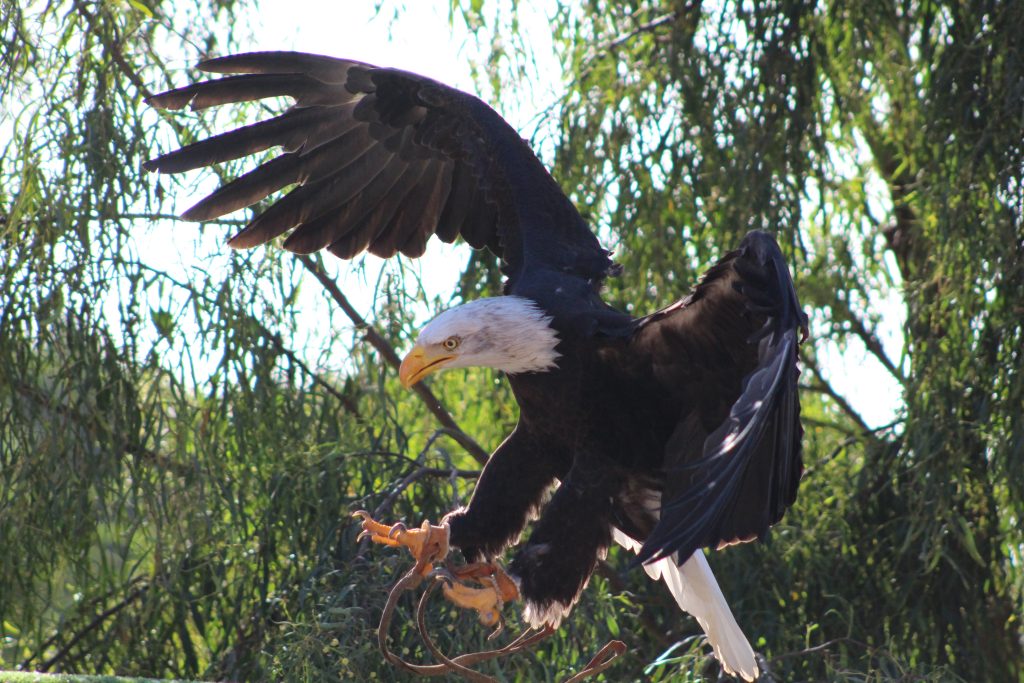It is one of the largest species in the genus Buteo.
Physical Features
This species can measure between 45 and 65 centimetres with a wingspan of up to 1.5 metres and can weigh up to 1.6 kilograms.
The plumage is coloured for adults and juveniles plumage does not differ much in colour and pattern, nor does it differ between males and females, which makes it difficult to differentiate between the sexes. Its name comes from the reddish, orange or pale colour it takes on the upper part of the tail.
Habitat
They can be found in open fields and arid deserts, wooded areas, cliffs, mountains, pine and broadleaf forests, and from wetlands to coastal areas.
Diet
Because the red-tailed hawk has a very fast flight and large, sharp legs and claws, they can hunt a variety of species.
Thus, Buteo jamaicensis also prey on ground squirrels, rabbits, tree squirrels, bats, quail, other raptors, snakes, lizards and even fish and insects. To capture such varied prey, red-tailed eagles have developed and perfected many different hunting techniques.
Reproduction
Bustards establish lifelong monogamous relationships. In red-tailed eaglet breeding, one to five eggs are laid. The female is responsible for most of the incubation work, while the male is responsible for bringing in food to feed her. Similarly, the female red-tailed hawk incubates her eggs for about a month, usually between 28 and 35 days. Juvenile redstarts grow rapidly. They gain weight, become large and their feathers start to grow so much that in just 42 days they are ready to fly for the first time.
Threats
The greatest dangers to these birds today are loss of habitat, electrocution by power lines and collision with wind farms.
Status and conservation
The red-tailed eagle is not endangered and is classified as “Least Concern”.





